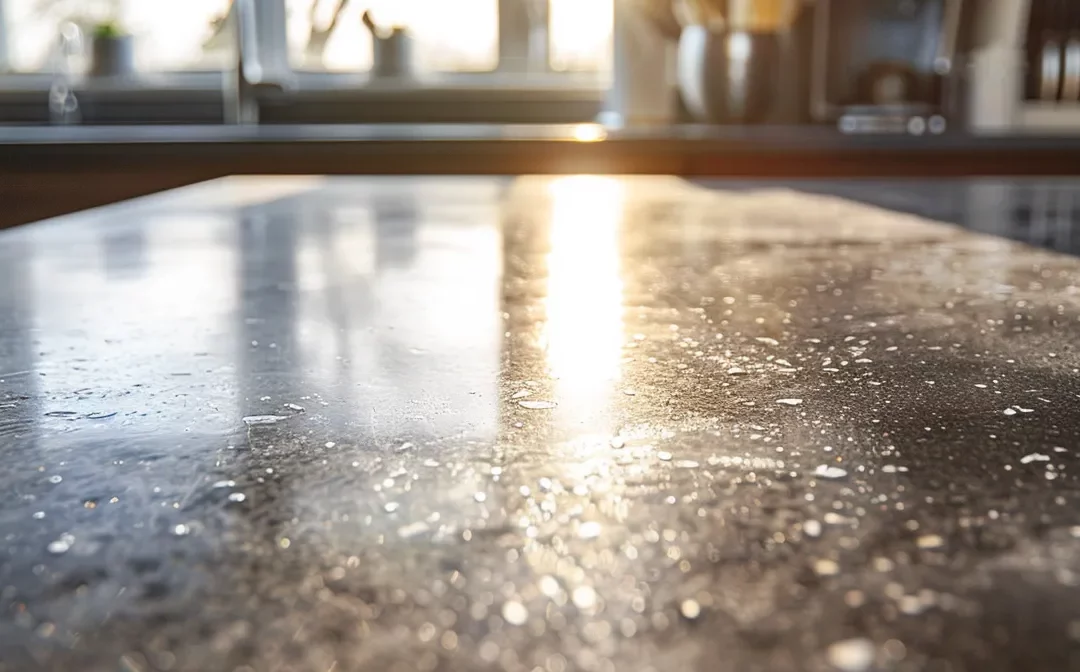Table Of Contents:
- Key Takeaways
- Introduction to Benchtop Resurfacing
- Key Factors That Influence Resurfacing Costs
- Key Factors That Influence Resurfacing Costs
- Breaking Down the Costs of Different Resurfacing Materials
- Professional Resurfacing vs. DIY: Evaluating the Costs
- Long-Term Value: Resurfacing Compared to Replacement
- Practical Tips to Manage and Reduce Resurfacing Costs
- Practical Tips to Manage and Reduce Resurfacing Costs
- Conclusion
Are you considering benchtop resurfacing but unsure about the costs involved? The average expense for resurfacing can vary greatly based on materials and design choices. This guide will break down the key factors that influence resurfacing costs, compare professional services to DIY approaches, and discuss the long-term value of resurfacing over replacement. By understanding these elements, you can make informed decisions for your cabinetry, whether it’s plastic, particle board, or other materials. Engaging with this content will help you navigate the financial aspects, ensuring you choose an option that meets your needs and budget.
Key Takeaways
- benchtop resurfacing is a cost-effective alternative to complete replacements
- customization options allow you to match surfaces with your existing décor
- regular maintenance helps extend the lifespan of resurfaced surfaces
- hiring professionals ensures quality results and minimizes potential mistakes
- selecting materials wisely can save money and enhance durability over time
Introduction to Benchtop Resurfacing
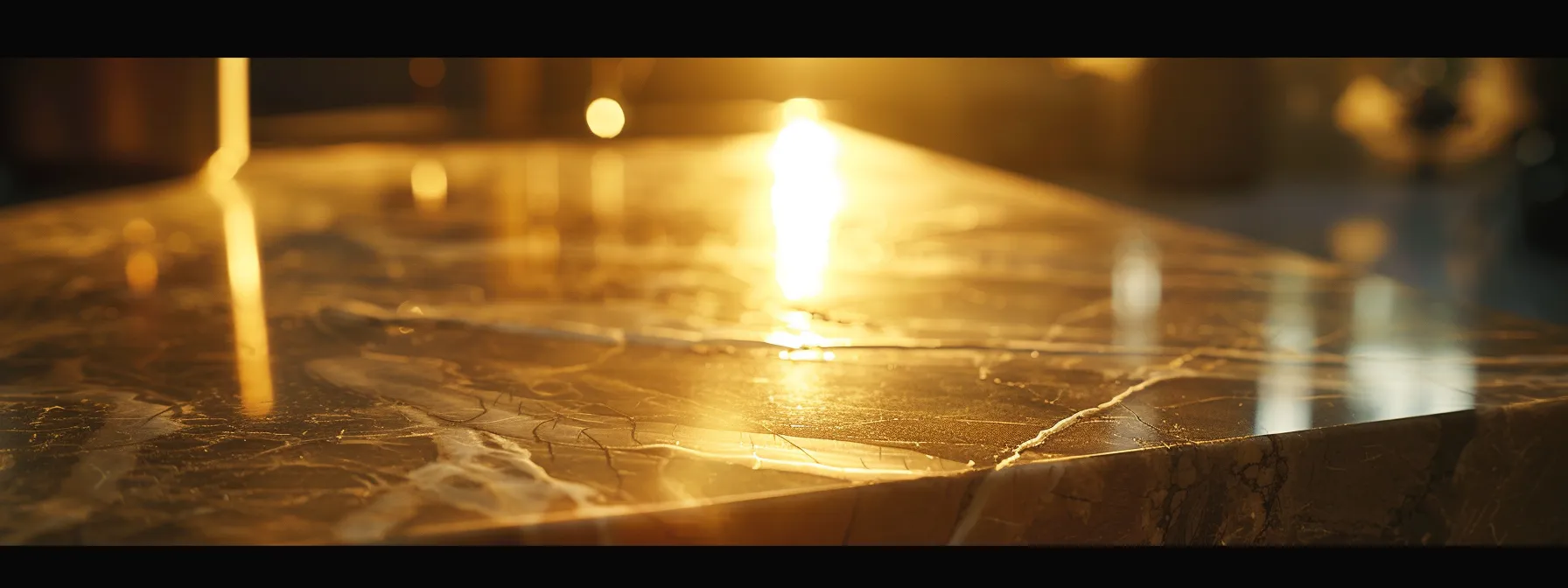
Benchtop resurfacing involves updating surfaces in your kitchen or bathroom, such as countertops, butcher blocks, and cooktops. This cost-effective solution offers advantages over complete replacements and can significantly enhance kitchen remodels. Recognizing common signs that it’s time to resurface, like scratches or discoloration, will help you maintain your space effectively.
Understanding What Benchtop Resurfacing Involves
Benchtop resurfacing is a practical way to refresh surfaces in your kitchen or bathroom without the hassle and expense of full replacements. You can resurface a variety of materials, including solid wood, granite, and soapstone, transforming your spaces to look like new again. The process allows for customization, letting you choose colors, textures, and finishes that align with your design preferences.
During resurfacing, existing surfaces are carefully prepared to ensure good adhesion. This often involves sanding and filling in any scratches or imperfections. For example, if you have a sink integrated into your countertop, the resurfacing can seamlessly blend with it, preserving the overall appearance while enhancing durability. The resin used in resurfacing is both strong and environmentally friendly, ensuring you contribute to sustainability without sacrificing quality.
One of the main advantages of benchtop resurfacing is its speed and efficiency. Unlike traditional remodels that may take weeks, resurfacing is typically completed within days, minimizing disruption to your daily routines. This quick turnaround can significantly enhance your kitchen remodel experience while keeping costs down. Understanding these aspects aids you in making an informed decision about when and how to update your Fimagine Website spaces:
- Identify the surfaces to be resurfaced, such as countertops and sinks.
- Consider materials like solid wood, granite, or soapstone for your project.
- Evaluate the environmental benefits of choosing eco-friendly resurfacing options.
- Understand the preparation process involved for optimal results.
Advantages of Resurfacing Over Replacement
One significant advantage of resurfacing your benchtops over complete replacement is cost-effectiveness. When you choose to resurface, you can save a considerable amount compared to buying new solid surface countertops or tiles. This budget-friendly option allows you to achieve a fresh look without the expense associated with high-end brands, making it an accessible choice for many homeowners.
Another benefit of resurfacing is the variety of customization options available. You can choose colors and pigments that perfectly match your existing décor, giving your kitchen or pantry a unique, personalized touch. The resurfacing process allows for the integration of different materials, ensuring that the final product not only looks appealing but also meets your functional needs.
Finally, resurfacing minimizes the disruption to your daily life. Unlike a full replacement, which can take weeks, resurfacing can often be completed in a matter of days. This means you can enjoy your newly revitalized surfaces in a shorter timeframe, allowing you to get back to your routine without added stress or inconvenience.
Common Signs It’s Time to Resurface Your Benchtop
When you begin to notice scratches or chips on your benchtop, it’s a clear sign that resurfacing might be necessary. Small imperfections can lead to larger problems if not addressed, impacting the overall appearance of your kitchen or bathroom. If you have a surface made of porcelain or resin, these materials can easily show wear and tear from daily use, making timely resurfacing essential to maintain their pristine look.
Discoloration is another indication that your benchtop requires attention. Sun exposure, moisture, and regular use can all lead to fading or uneven tones across surfaces. In kitchens, color variations might be particularly noticeable on surfaces around the stove or sink, especially if they’re near light-colored ceilings or walls, which can amplify the contrast and highlight any flaws.
Finally, if you are experiencing difficulty cleaning your benchtop or noticing that stains linger longer than before, it may be time to consider resurfacing. A worn surface can absorb spills more readily, leading to unsightly marks or odors. Resurfacing can restore not just the look, but also the hygiene of your benchtop, allowing for easier maintenance and keeping your spaces looking fresh and inviting.
Benchtop resurfacing brings new life to tired surfaces. Next, you’ll find out what drives the costs and how to make your investment count.
Key Factors That Influence Resurfacing Costs
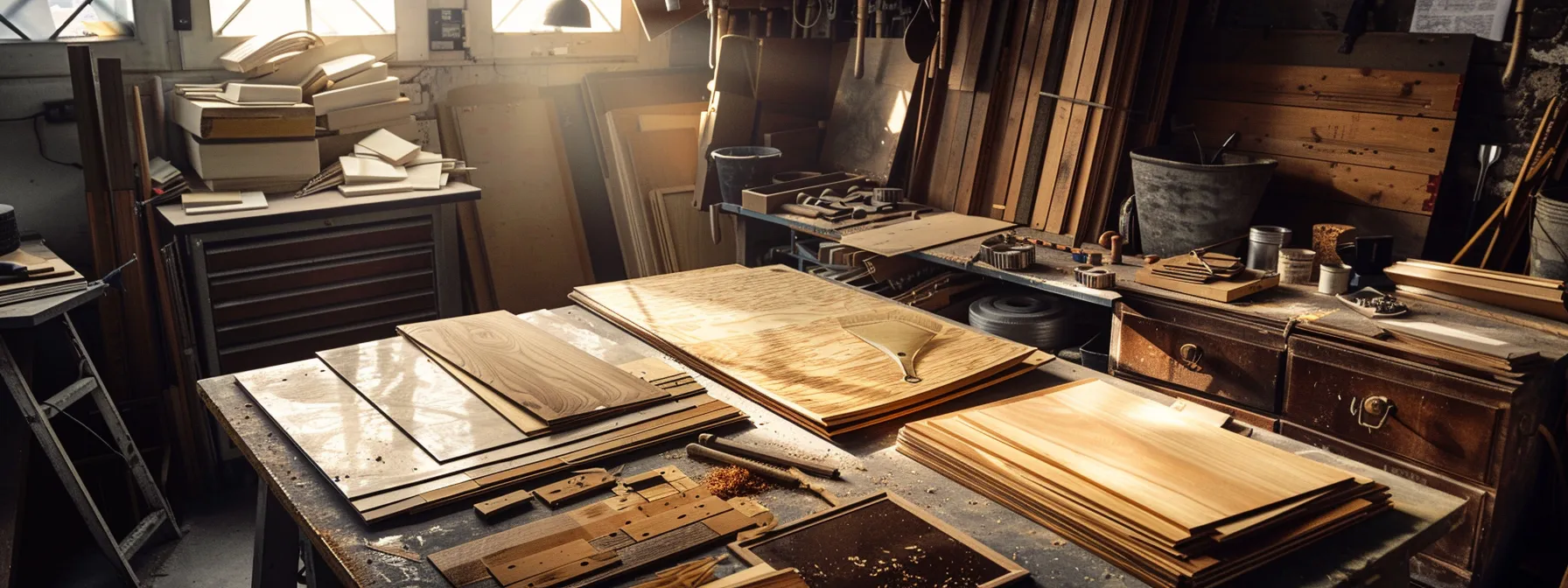
Key Factors That Influence Resurfacing Costs
Your choice of materials significantly impacts resurfacing costs, with options like wood veneer and plywood varying in price. The size and complexity of your benchtop, including any plumbing fixtures involved, also affect overall expenses. Additionally, the condition of your existing surface can lead to extra preparation work. Labor rates differ depending on location, contributing to cost variations. Understanding these factors will help you make informed decisions during your renovation.
Material Selection and Its Impact on Price
When selecting materials for benchtop resurfacing, consider the longevity and usability of each option. For instance, materials like granite and solid wood are known for their durability and ability to withstand the rigors of everyday use. Opting for a material with a longer lifespan will not only enhance the aesthetic appeal of your room but also save you from frequent resurfacing costs down the line.
Thermofoil is another popular choice that offers both affordability and versatility for resurfacing projects. This material can mimic the look of wood or stone and is resistant to moisture, making it an excellent option for areas such as kitchens and showers. Thermofoil offers a practical solution that balances budget constraints with the practical needs of your home, providing an attractive finish without compromising on usability.
Additionally, the complexity of your benchtop design, including intricate cuts or integrated features, impacts the overall price. The more detailed the requirements, the higher the labor costs can be, as skilled professionals need to manage these nuances carefully. Understanding how your material choice affects both usability and installation complexity will empower you to make informed decisions that fit within your budget while achieving the desired look for your space.
Size and Complexity of Your Benchtop
The size of your benchtop plays a significant role in determining the overall cost of resurfacing. Larger surfaces require more materials and labor, which can increase the overall expenses. For example, if your kitchen includes an expansive stainless steel countertop or multiple adjoining surfaces, this larger scale will necessitate more time and effort for adequate preparation and application of epoxy coatings, impacting your budget.
The complexity of your benchtop design also affects resurfacing costs. Features such as integrated sinks, intricate cuts, or installations around drawers can complicate the resurfacing process. If you need to work around these features, the skill level required increases, which can lead to higher labor costs to ensure that the final result meets your aesthetic and functional needs.
Additionally, when considering resurfacing options for metal countertops or other complex materials, it’s essential to think about the warranty that comes with your project. A comprehensive warranty gives peace of mind, ensuring that the work performed meets high-quality standards. The interplay between surface size, design complexity, and the available warranty can help you make informed decisions that align with your budget while ensuring a durable and appealing result.
Condition of the Existing Surface
The condition of your existing surface plays a critical role in determining the overall cost of benchtop resurfacing. If your countertop shows signs of deep stains or damage, such as chips or cracks, this will require more extensive preparation before the resurfacing process can begin. For instance, surfaces made from materials like Caesarstone might need careful repair to ensure that they adhere properly to the new resin, ultimately affecting both time and labor costs.
When assessing your surface, take precise measurements to determine the length and width of the area to be resurfaced. This is especially important if your existing countertop features intricate designs or details, like crown molding. Not only will accurate measurements assist in the estimation of materials, but they also ensure that the resurfacing blends seamlessly with the surrounding components of your kitchen or bathroom.
It’s essential to understand that the better the condition of your existing surface, the less preparation work will be needed, thereby reducing costs. If you notice minor wear that can be easily addressed, such as light stains or scratches, you’ll likely save on both time and labor. Maintaining your benchtop proactively protects your investment and minimizes the need for extensive resurfacing efforts down the line.
Labor Rates and Professional Fees
When considering benchtop resurfacing for your home improvement project, it’s essential to factor in labor rates and professional fees. These costs can vary significantly based on geographical location and the local cost of living. For example, hiring a professional in a metropolitan area may result in higher fees compared to rural settings, reflecting the demand for skilled labor in those regions.
In addition to location, the expertise of the resurfacing contractor can influence the fee structure. Professionals with extensive experience, particularly in resurfacing materials like marble or granite, may charge a premium for their services. It’s crucial to research and compare contractor rates on platforms like HomeAdvisor to ensure you are getting a fair estimate based on the quality of work and materials involved.
Keep in mind that choosing a skilled professional can save you money in the long run. While it may be tempting to opt for the lowest fee, investing in quality workmanship ensures that your resurfaced benchtops will last longer and perform better. Addressing potential problems early on can prevent costly repairs down the line, making it a smart financial decision for your home improvement efforts.
Location-Specific Cost Variations
The cost of benchtop resurfacing can vary significantly based on your geographic location. Urban areas with higher living expenses often see increased labor rates, leading to a rise in overall project price. For example, if you are in a busy city, resurfacing your kitchen during a remodel might come at a premium compared to rural settings, where professionals may charge lower fees due to reduced demand.
Another factor influencing costs is the availability of skilled resurfacing contractors in your area. In regions where there is a high demand for kitchen remodels and home makeovers, you might encounter higher prices. It’s essential to research your local market to find a contractor who offers quality service at a competitive price, especially if your surfaces have significant wear and tear that needs addressing.
Finally, consider the materials that are popular in your region. If steel countertops are a common choice in your area, finding the right resurfacing solutions for them may require specialized skills, impacting labor costs. Ultimately, understanding these location-specific variations can help you budget effectively for your benchtop resurfacing project and ensure you receive the best value for your investment.
Understanding what drives resurfacing costs is just the beginning. Now, let’s look closely at the different materials you can choose and how each one affects your budget.
Breaking Down the Costs of Different Resurfacing Materials
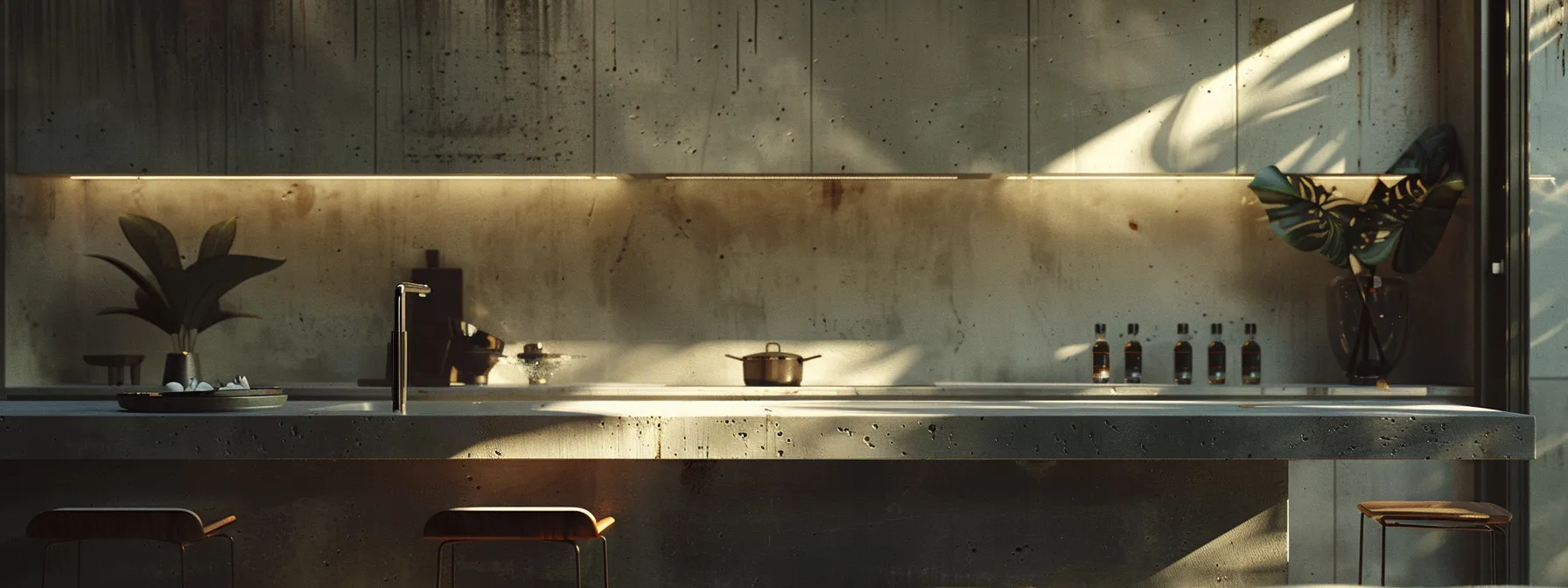
When considering your options for benchtop resurfacing, it’s important to understand the cost differences associated with various materials. In this section, you will explore laminate resurfacing for budget-friendly solutions, stone overlays that offer premium aesthetics, timber resurfacing which balances beauty and cost, and concrete resurfacing that delivers a modern look with expected expenses. This knowledge will guide you in making informed decisions for your kitchen remodeling project.
Laminate Resurfacing: Affordable Options
Laminate resurfacing serves as a cost-effective alternative to replacing your benchtops. It provides a fresh look without the hefty price tag associated with solid surface materials. By utilizing laminates, you can achieve the appearance of natural wood or stone while adhering to building codes and avoiding more complex renovations.
The manufacturing of laminate surfaces allows for a wide range of options in color, texture, and finish. This versatility ensures that you can select a look that matches your kitchen or bathroom aesthetics while keeping an eye on budget constraints. For woodworking enthusiasts, laminate is a straightforward choice that eliminates the need for extensive labor associated with traditional materials.
As you consider laminate resurfacing, understand that the process is generally less complicated than that of solid surfaces, making it an appealing choice. The installation is typically quicker and requires less technical skill, meaning you can enjoy your updated space sooner. If you’re looking for a practical solution that balances affordability with aesthetics, laminate resurfacing could be your ideal option:
- Cost-effective choice for benchtops.
- Wide range of styles to match decor.
- Quick installation time compared to other materials.
Stone Overlays: Premium Choices and Prices
When you consider stone overlays for your benchtop resurfacing project, you’re opting for premium materials like quartz, which offer both aesthetic appeal and durability. This choice not only enhances the visual quality of your kitchen but also adds significant value to your home. While the initial expense may be higher than laminate options, the long-lasting nature of quartz makes it a worthwhile investment for your kitchen cabinet renovations.
During the resurfacing process, professionals apply a specialized coat over your existing surfaces, which includes advanced techniques to ensure a flawless finish. This method of construction allows the stone overlay to bond effectively with the underlying materials, resulting in a seamless appearance that mimics that of solid stone. You’ll appreciate how this not only provides a fine look but also contributes to the longevity and performance of your benchtops.
When calculating the total cost of your project, be sure to factor in both the material and labor required for stone overlays. The expense varies based on the specific quartz type you choose and the size of your benchtop. Investing in skilled professionals who can execute the resurfacing flawlessly will ensure that you achieve the high-quality results you desire, enhancing your kitchen while keeping your long-term maintenance costs low.
Timber Resurfacing: Balancing Aesthetics and Cost
Timber resurfacing offers a warm and inviting look that many homeowners find appealing. With various types of wood available, you can select an option that complements your kitchen or bathroom décor while ensuring the durability needed for everyday use. Unlike other materials such as Corian, timber may show wear over time, but with timely refinishing, it can maintain its beauty for years.
In terms of cost, wooden surfaces can be more budget-friendly compared to solid surface options. If you’re considering resurfacing a cutting board or other wooden surfaces, the expense associated with timber can be pleasantly surprising. Choosing wood for your benchtop can be an aesthetically pleasing option without putting too much strain on your renovation budget.
Keep in mind that timber also requires regular maintenance to preserve its appearance and functionality. If you’re interested in refinishing solutions for your bathtub or other surfaces, understanding the upkeep involved with wood will help you make an informed choice. By proactively addressing wear and performing necessary maintenance, you can enjoy a beautiful and functional timber surface that enhances your home:
Concrete Resurfacing: Modern Looks, Expected Expenses
Concrete resurfacing is a contemporary solution for enhancing your benchtops in both Bathrooms and Kitchens. Known for its durability, concrete offers a unique aesthetic that appeals to many homeowners. However, keep in mind that the porosity of concrete requires careful consideration during the selection process, as it can absorb stains if not properly sealed. To ensure lasting beauty, choose an engineered stone finish that complements your design style while providing the necessary protection.
The expected expenses associated with concrete resurfacing can vary significantly based on the complexity of your project. Factors like the size of your benchtops and the specific finishes you choose impact the overall cost. Investing in high-quality materials can enhance the return on investment, especially if you select decorative techniques that elevate the look of your space, setting it apart from standard installations.
Additionally, one of the benefits of concrete resurfacing is its versatility compared to ceramic or traditional stone options. You can achieve a range of styles and colors that fit your aesthetic without excessive cost. Understanding these dynamics will help you navigate your design goals while staying aware of the potential expenses involved in your renovation project.
Now that you’ve seen the costs tied to different resurfacing materials, it’s time to consider how you want to tackle your project. Will you hire a professional or take on the challenge yourself? Let’s evaluate the costs of each approach.
Professional Resurfacing vs. DIY: Evaluating the Costs
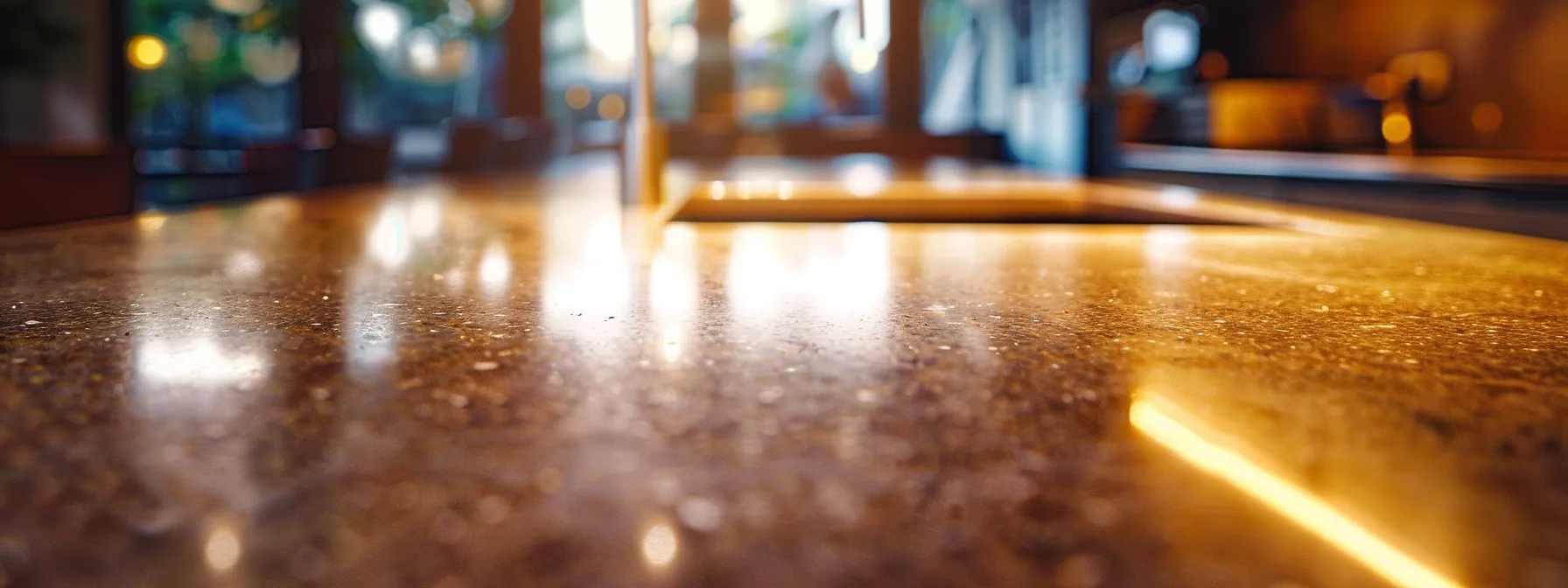
When considering benchtop resurfacing, you face a choice: tackle the project yourself or hire a professional. Doing it yourself may seem appealing for its cost benefits, especially if you’re handy with materials like lumber. However, potential risks and hidden expenses, such as dealing with water damage, could arise. In this section, you will learn when hiring a professional can actually save you money by providing better durability and results, comparing long-term costs and outcomes for polished concrete and other materials.
Cost Benefits of Doing It Yourself
Choosing to resurface your benchtops yourself can lead to significant cost savings. By opting for DIY, you eliminate labor fees associated with hiring professionals, which can often multiply your overall expenses. This approach allows you to control the budget based on your preference for materials, whether you select affordable options like bamboo or more premium choices such as concrete or stonemasonry.
Another benefit of tackling the resurfacing process yourself is the flexibility to customize your project according to your specific tastes. You can select colors, finishes, and textures that align perfectly with your vision, enhancing both the beauty and functionality of your kitchen or bathroom. This personal touch not only adds value to your space but also allows you to create an environment that reflects your unique style.
While DIY can be rewarding, you should remain mindful of the skills required for successful resurfacing. Investing time in proper research and preparation ensures you achieve the desired outcome. By understanding the intricacies involved, including how to effectively apply materials like epoxy over concrete or other surfaces, you increase your chances of a successful project that meets your expectations without incurring hidden costs down the line.
Potential Risks and Hidden Expenses in DIY Projects
Undertaking DIY benchtop resurfacing can seem like a cost-saving option. However, the risks associated with this approach may not always be apparent at first glance. If you underestimate the time or skill needed, you may have to spend extra on materials like sealants or specialized polymers to correct mistakes, further complicating your budget.
Another hidden expense arises from the likelihood of needing repairs after your DIY project. If there are issues like improper sealing, your surface may not withstand wear over time, making it necessary to invest in professional help later. This not only impacts your finances but could also have negative consequences for the aesthetics of your interior design, straying from the look you originally intended to achieve.
Don’t forget about sustainability considerations. If you end up using materials or processes that are less eco-friendly than expected, you might miss out on recycling and sustainable options available through professional services. Weighing the upfront savings against potential long-term pitfalls will help you make a well-informed decision, ensuring your resurfacing project meets both your design and environmental goals:
- Initial cost savings may lead to oversights in skill and time
- Hidden repairs can increase expenses beyond your initial budget
- Sustainability factors might be overlooked with DIY materials
When Hiring a Professional Saves Money
When you hire a professional for benchtop resurfacing, you save money by avoiding costly mistakes that can arise from a DIY approach. A skilled contractor understands how to apply the right adhesive materials and ensures proper waterproofing techniques are followed, protecting your investment from potential moisture damage. Their experience reduces the risk of abrasion and wear in areas that receive heavy use, which means your surfaces will last longer and require fewer repairs in the future.
Professionals have access to high-quality materials and tools that may not be readily available for personal use. For example, they can select the ideal texture finish that complements your existing decor while ensuring optimal performance. This level of expertise ensures your resurfacing project is carried out correctly the first time, leading to better durability and fewer long-term costs.
The efficiency of hiring a professional also helps in saving costs. A trained resurfacing contractor can complete the job quickly, limiting the disruption to your daily life and allowing you to enjoy your newly updated surfaces sooner. This fast turnaround minimizes your downtime, providing convenience and value that DIY projects often cannot match:
Comparing Long-Term Costs and Results
When comparing the long-term costs of professional resurfacing versus a DIY approach, you should consider not only the initial investment but also the potential for future maintenance and repairs. Professionals can ensure that the resurfacing is done correctly the first time, which often means lower costs down the line by avoiding mistakes that would require additional work. A poorly executed DIY project can lead to further issues, causing you to spend more in the long run trying to fix unexpected problems.
Your choice to hire a professional also impacts the overall quality and durability of the resurfaced benchtop. Skilled contractors use specialized tools and high-quality materials that contribute to a more lasting finish. If you decide to go the DIY route, you may find that the materials you use do not hold up as well over time, leading to extra time and money dedicated to repairs or another resurfacing project sooner than anticipated.
Ultimately, weigh the convenience and expertise of hiring a professional against the potential savings from a DIY project. While it might seem appealing to save on labor costs, consider the time involved in learning techniques and the likelihood of missteps that might arise. A professional can complete the job efficiently, allowing you to enjoy your revitalized spaces without the stress of ongoing maintenance that may come with an unprofessional job.
You’ve weighed the costs of resurfacing against the DIY route. Now, let’s dive into how resurfacing holds its own against full replacement over time.
Long-Term Value: Resurfacing Compared to Replacement
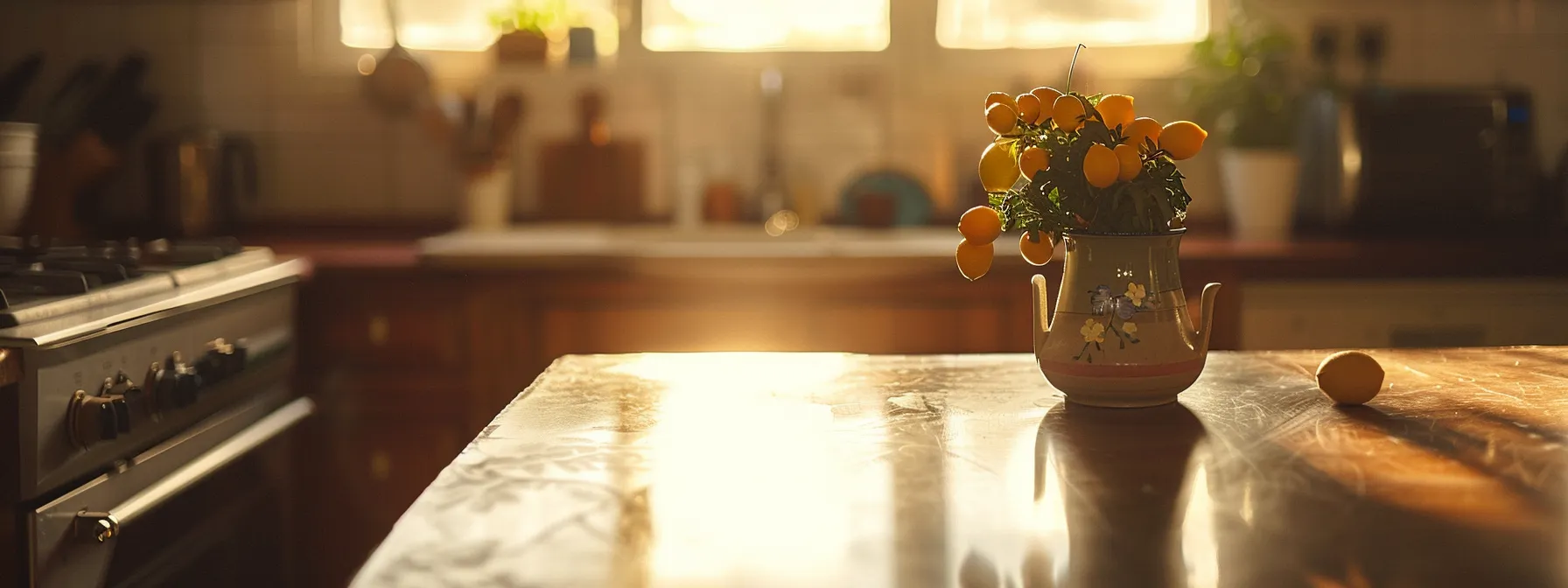
When deciding between benchtop resurfacing and a full replacement, consider cost savings, property value impacts, and durability. Resurfacing offers a more budget-friendly alternative, preserving your investment while enhancing appearance. Additionally, it contributes to sustainability, reducing waste and utilizing eco-friendly materials. Understanding these aspects equips you to make informed choices that align with your lifestyle and financial goals.
Cost Savings Over Full Benchtop Replacement
Choosing benchtop resurfacing over full replacement can result in substantial cost savings for your kitchen or bathroom renovation. Resurfacing typically involves a lower upfront investment, as it allows you to refresh existing surfaces without the need to purchase new materials. This approach gives you the benefit of a modern look while retaining a significant portion of your budget for other areas of your project.
By opting for resurfacing, you can often complete the project within a few days, minimizing disruption to your daily life. Full replacements, on the other hand, can take weeks to finish and may require additional costs for moving appliances or installations. The quicker turnaround not only reduces labor costs but also allows you to enjoy your revitalized space much sooner.
In addition, resurfacing contributes to sustainability by lowering waste associated with old materials. When you choose to resurface, you are effectively extending the life of your existing benchtops, which can significantly impact your property’s long-term value. This environmentally friendly option enhances the overall appeal of your home without the hefty price tag typically associated with full benchtop replacements.
Effects on Property Value and Appeal
Investing in benchtop resurfacing can significantly enhance your property value and appeal. Updated countertops in kitchens and bathrooms often attract potential buyers, as they enhance the overall aesthetic of your home. When prospective homeowners see well-maintained surfaces, they are more likely to perceive the property as a desirable investment, making resurfacing a valuable consideration before selling.
In addition to improving visual appeal, resurfacing can contribute to the functionality of your spaces. For instance, if you resurface your kitchen countertops with durable materials that withstand heat and moisture, you enhance their usability. When potential buyers recognize that they won’t have to worry about immediate repairs or replacements, they may be more willing to pay a premium for your home.
Overall, resurfacing your benchtops serves as a strategic move to increase marketability. It offers a cost-effective alternative to full replacements while providing a refreshed look that can sway buyers’ decisions. By opting for resurfacing, you enjoy both immediate benefits and long-term value enhancement in your property:
- Increased visual appeal attracts potential buyers.
- Enhanced functionality promotes the usability of surfaces.
- Cost-effective approach boosts marketability of your property.
Lifespan and Durability Considerations
The lifespan of resurfaced benchtops is often comparable to that of new materials, provided you choose high-quality options and maintain them properly. Most resurfacing materials, including laminate or stone overlays, are designed to withstand daily wear and tear, making them a durable choice for your kitchen or bathroom. By regularly cleaning and caring for your surfaces, you can maximize their longevity and retain their appealing appearance.
When considering durability, it’s important to note that some materials used for resurfacing are inherently more resilient. For instance, natural stone surfaces like quartz not only offer a beautiful finish but are also less prone to scratching and staining than some traditional materials. This resilience means that resurfacing can be a smart investment, as it allows you to enjoy aesthetically pleasing and functional surfaces for many years.
Additionally, resurfacing provides an opportunity to extend the life of your existing surfaces, thereby enhancing your home’s overall value. By opting for a resurfacing project instead of complete replacement, you can achieve a fresh look without incurring the cost and disruption of a full renovation. Understanding the lifespan and durability of resurfaced benchtops enables you to make informed decisions and ensures your investment is worthwhile:
Environmental Benefits and Cost Implications
Choosing benchtop resurfacing over full replacement provides significant environmental benefits. By opting to refresh existing materials, you reduce waste that typically results from disposing of old countertops. This commitment to sustainability can positively reflect on your values as a homeowner, as well as promote eco-friendly practices in your community.
Another advantage of resurfacing is its potential to lower your carbon footprint. Manufacturing new materials often requires substantial energy and resources, leading to higher emissions and environmental impact. By resurfacing, you help conserve these resources, supporting both your nearby environment and global sustainability efforts.
Understanding the cost implications of resurfacing is also essential. While resurfacing can be an initial investment, it often leads to savings over time due to lesser waste and reduced energy consumption. In the long run, your choice can result in a lower overall expenditure while promoting a healthier planet.
Resurfacing your kitchen or bathroom offers lasting benefits, but it’s wise to keep an eye on expenses. Let’s look at practical ways to manage and reduce those resurfacing costs.
Practical Tips to Manage and Reduce Resurfacing Costs
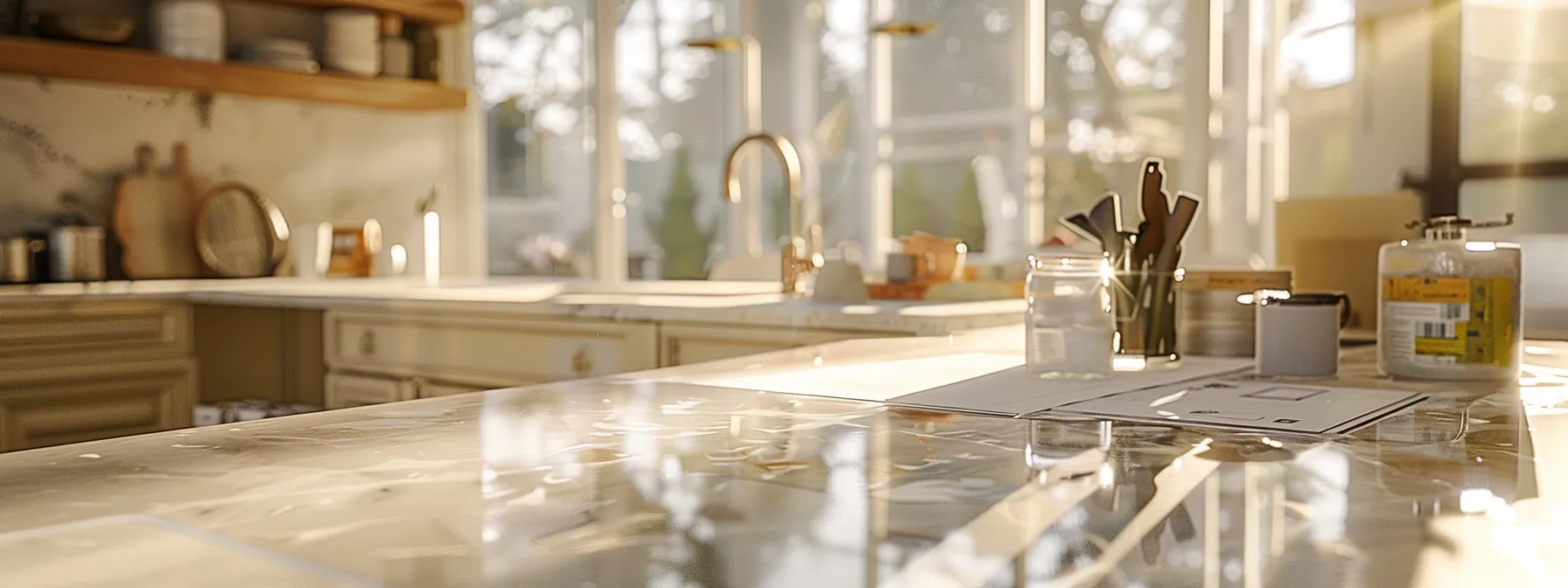
Practical Tips to Manage and Reduce Resurfacing Costs
To effectively manage and reduce your benchtop resurfacing costs, start by selecting cost-effective yet durable materials that suit your needs. It’s also beneficial to get multiple quotes from professionals to ensure competitive pricing. Scheduling your resurfacing projects during off-peak times can lead to better rates. Regular maintenance is key to avoiding frequent resurfacing, allowing you to preserve your investment. Lastly, exploring financing and payment options can help make the project more manageable financially.
Selecting Cost-Effective Yet Durable Materials
When selecting materials for your benchtop resurfacing project, consider options that offer both durability and cost-effectiveness. Materials like laminate and thermofoil can provide a modern look while being gentle on your budget. These choices not only resist wear and tear but also often mimic the appearance of more expensive surfaces, allowing you to update your kitchen or bathroom without straining your finances.
Granite and quartz are also excellent options if you’re willing to invest slightly more for long-lasting results. They are highly durable and resistant to scratches and stains, meaning you won’t have to worry about frequent maintenance or replacements for years. By choosing these materials, you ensure that your resurfaced benchtops maintain their appeal while maximizing your return on investment.
Lastly, don’t underestimate the importance of consulting with professionals who understand the nuances of resurfacing materials. Their expertise can guide you toward the most suitable options given your specific needs and budget constraints. They can also help you explore special offers or alternative materials that fit your design vision while delivering the quality and longevity you desire.
Getting Multiple Quotes From Professionals
When planning your benchtop resurfacing project, getting multiple quotes from professionals is crucial. By reaching out to several contractors, you gain insight into the price ranges and services offered in your area, helping you make an informed decision. This practice not only promotes transparency but also allows you to identify any discrepancies in pricing based on the scope of work required.
As you evaluate quotes, pay attention not just to the total costs, but also to what is included in each estimate. Reputable contractors should detail their proposed materials, labor costs, and any additional fees, enabling you to compare apples to apples. This approach helps you spot both competitive offers and potential red flags regarding service quality and transparency.
Lastly, don’t hesitate to ask contractors about their processes and experience with benchtop resurfacing to ensure you are choosing a qualified professional. By discussing your specific needs and concerns, you can gauge their responsiveness and willingness to provide personalized service. Ultimately, taking the time to collect and review multiple quotes can lead to better financial outcomes and a successful resurfacing experience.
Scheduling Projects During Off-Peak Times
Scheduling your benchtop resurfacing project during off-peak times can result in significant savings. Contractors often experience slower periods during certain months or seasons, which can lead to lower rates and more flexible scheduling options. By choosing to complete your resurfacing project during these times, you increase your chances of securing a better deal that fits within your budget.
Additionally, off-peak scheduling gives you enhanced access to professional resurfacing services. During busy periods, contractors may become overwhelmed, making it harder for you to find a qualified professional to complete your project promptly. By planning ahead and selecting a quieter time, you can ensure that you have more options available, ultimately improving the quality of the service you receive.
Finally, choosing off-peak times for your resurfacing project minimizes disruptions to your daily life. Contractors can often dedicate more time and attention to your project when they aren’t juggling multiple jobs. This focused approach not only leads to a quicker turnaround but also increases the likelihood of achieving high-quality results you can enjoy for years to come.
Proper Maintenance to Avoid Frequent Resurfacing
To avoid the need for frequent resurfacing, it is essential to establish a routine maintenance schedule for your benchtops. Regular cleaning with a mild detergent and a soft cloth will prevent buildup of grime and stains that can compromise the surface. Avoid using harsh chemicals or abrasive scrubbers, as these can damage the finish and lead to premature resurfacing needs.
Another key maintenance tip is to use cutting boards and trivets to protect your benchtops from scratches and heat damage. By placing these protective barriers between your surfaces and sharp or hot objects, you help maintain their appearance and integrity over time. Prioritizing these simple practices can significantly extend the life of your resurfaced benchtops.
Lastly, keep an eye out for any signs of wear such as minor scratches or discoloration. Addressing these issues promptly with proper repair solutions can prevent them from developing into larger problems that demand resurfacing. By maintaining your surfaces and being proactive, you will enjoy long-lasting beauty and functionality without incurring frequent costs:
- Establish a regular cleaning routine.
- Use cutting boards and trivets for protection.
- Address minor issues promptly to prevent larger problems.
Exploring Financing and Payment Options
When planning your benchtop resurfacing project, exploring financing options can ease the financial burden. Many contractors offer payment plans that allow you to spread the cost over time rather than paying a lump sum upfront. This can make a significant difference in managing your budget, especially if you desire top-quality materials or professional services.
Utilizing home improvement loans is another viable option. These loans typically come with competitive interest rates and can cover the costs associated with resurfacing. Researching local lenders or online platforms may lead you to favorable terms that align with your financial situation, ensuring that you can achieve your desired kitchen or bathroom updates without overwhelming your finances.
Don’t forget to engage your contractor in discussions about potential discounts or promotions they may have. Some professionals may offer seasonal deals or bundled services that can further reduce the cost of your resurfacing project. Taking advantage of these opportunities allows you to not only access quality resurfacing but also stay within your budget.
Conclusion
Understanding the true cost of benchtop resurfacing is essential for making informed decisions that enhance the value and appeal of your kitchen or bathroom. By evaluating material choices, project size, and potential DIY versus professional costs, you can manage your budget effectively while achieving beautiful, durable results. Prioritizing regular maintenance and considering eco-friendly options also supports sustainability and long-term investment in your home. Overall, this comprehensive knowledge empowers you to refresh your spaces efficiently and confidently, ensuring you get the best return on your investment.
